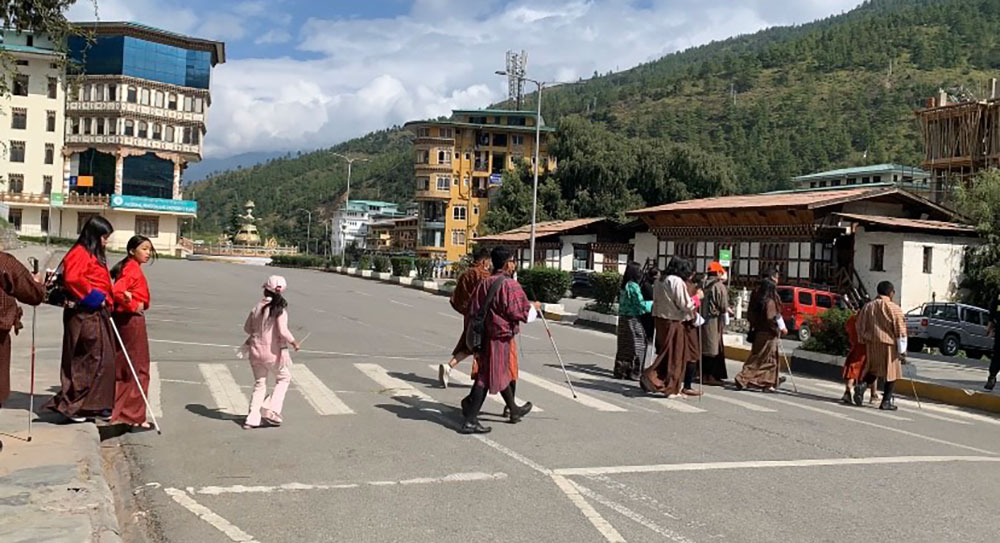Yangyel Lhaden
Bhutanese with blindness raised concerns about the accessibility and affordability of white canes during International White Cane Safety Day yesterday.
The community of those with blindness and Disabled People’s Organization observed the day, with about 80 people with blindness and their guardians at the Clock Tower square.
They walked around town to advocate for the importance of the white cane, which serves as a mobility tool for the blind and symbolises their independence.
Some participants without white canes were provided bamboo sticks. “My white cane is rusted at the bottom, and I cannot use it anymore,” said Tshering Karchung, a person with blindness. “I will use the bamboo stick until I am able to afford one.”
Tshering Karchung works as a masseuse and earns about Nu 7,000 a month. A white cane in the market costs about Nu 1,800. “With the help of a white cane, I can walk alone.”
Many people with blindness at the event were using white canes gifted by their friends. They expressed concerns on its affordability and availability. There is only one medical store in Thimphu that sells white canes.
A person with blindness started using a white cane after attending training at a school conducted in 2005. Today, he is one of many trained people with blindness who help their friends use white canes.
Deputy chief counselor with the education ministry, Amrith Bdr Subba said that conducting routine training and making white canes available are important. “The white cane is our guide, and not all individuals with blindness can use it, especially in rural areas.”
Dorji, a person with blindness, said that he bought a white cane on Amazon for Nu 750. “The market price is expensive.”
Dr Sanga Dorji, a person with blindness, said that with the observance of White Cane Day every year, his only hope was that the use of white canes will become supported by law and policy to make them more accessible.
In developed countries like the UK, visually-impaired individuals are given two choices: to use a white cane or a trained dog to guide them. Dr Sanga Dorji chose the white cane. “The white cane prevents us from injury from obstacles near us and is a sign of our independence.”
There are approximately 200 individuals with visual impairment in the country.


